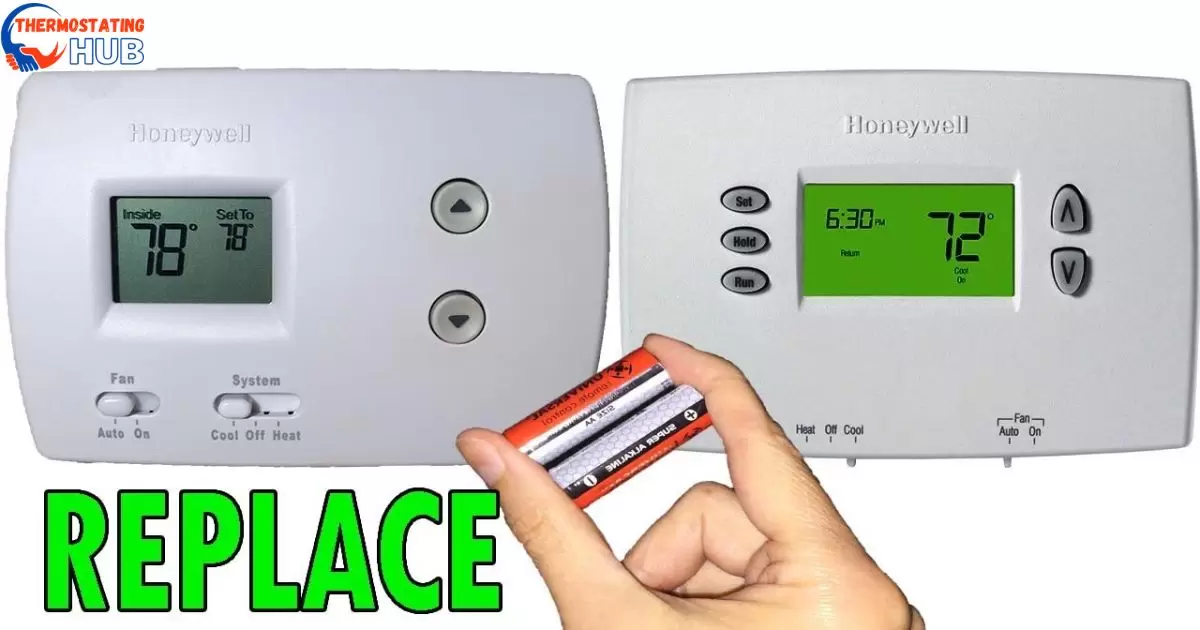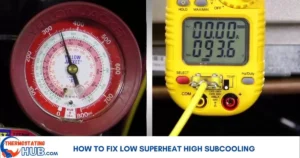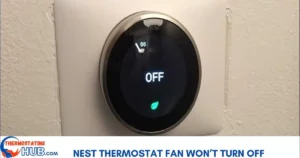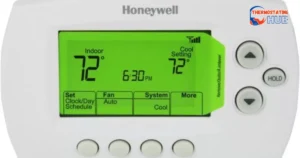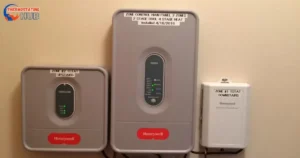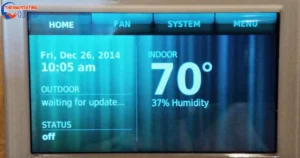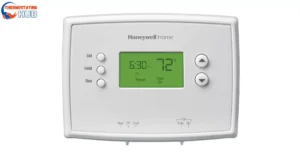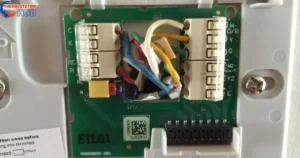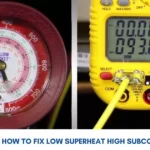If your Honeywell thermostat isn’t acting quite right, it might be signaling low battery levels. Understanding the symptoms and knowing how to replace the batteries can keep your home comfortable. Let’s explore the common signs that your thermostat needs fresh batteries.
Honeywell thermostats are well-loved for being reliable and easy to use. But, like anything else, they can have problems, especially when the battery is low. When the battery in a Honeywell thermostat is running low, it can create issues that might mess with how comfy and efficient your home is with heating and cooling.
This blog will chat about the usual signs of a low battery in Honeywell thermostats and teach you how to change the battery. Doing this helps make sure your thermostat works smoothly and keeps your home feeling just right.
Common Symptoms of Low Battery in Honeywell Thermostats
If your Honeywell thermostat has a low battery, it may show a warning message, give inaccurate temperatures, or have a blank screen. Replacing the batteries, usually once a year, can fix these issues and keep your thermostat working well. Watch for these signs to ensure your home stays comfortable.
Low battery warning message or symbol
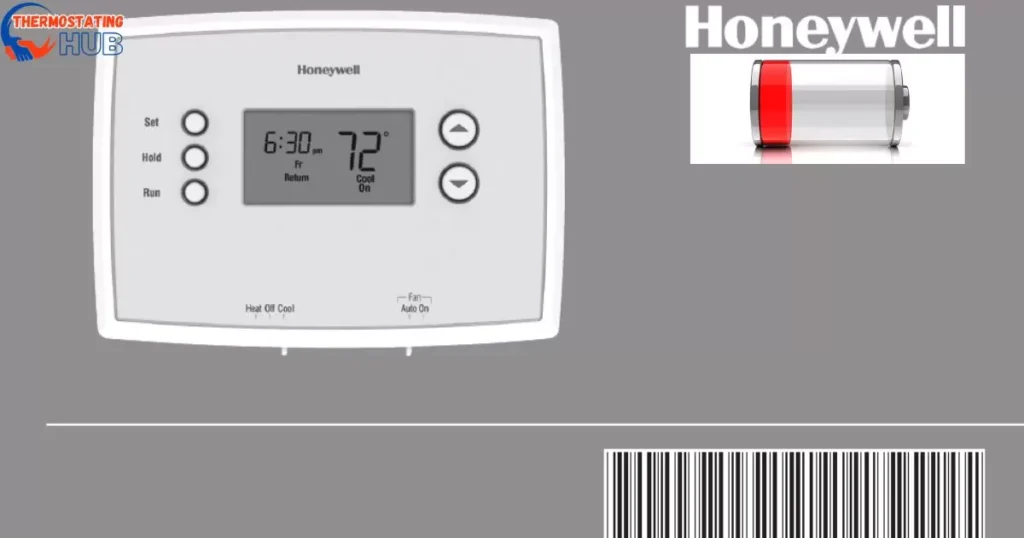
When you see a low battery message or symbol on your thermostat, it’s time for a battery change. Ignoring this warning can lead to thermostat malfunctions.
When your Honeywell thermostat’s battery is running low, it will show a message or symbol to let you know. This could be a symbol that looks like a low battery, a blinking battery symbol, or a message saying “battery low.” It’s crucial to notice this warning and change the battery quickly to prevent more issues.
Inaccurate temperature readings
If your thermostat starts showing temperatures that don’t match the actual room conditions, it could be a sign of low battery issues affecting its accuracy.
When the battery in your Honeywell thermostat is low, it can make the thermostat show the wrong temperature. This happens because the thermostat might struggle to measure the temperature correctly with a low battery. So, the number you see on your thermostat might not match how warm or cool it is in your home.
Unresponsiveness or slow performance
A sluggish or unresponsive thermostat is another symptom of low batteries. A quick response to temperature adjustments is crucial for maintaining comfort.
If the battery in your Honeywell thermostat is low, it can make the thermostat act slowly or not respond well. This means it might take more time than usual to change the temperature or adjust the settings. You might also feel that the buttons on the thermostat don’t work as quickly as they normally do.
Blank screen
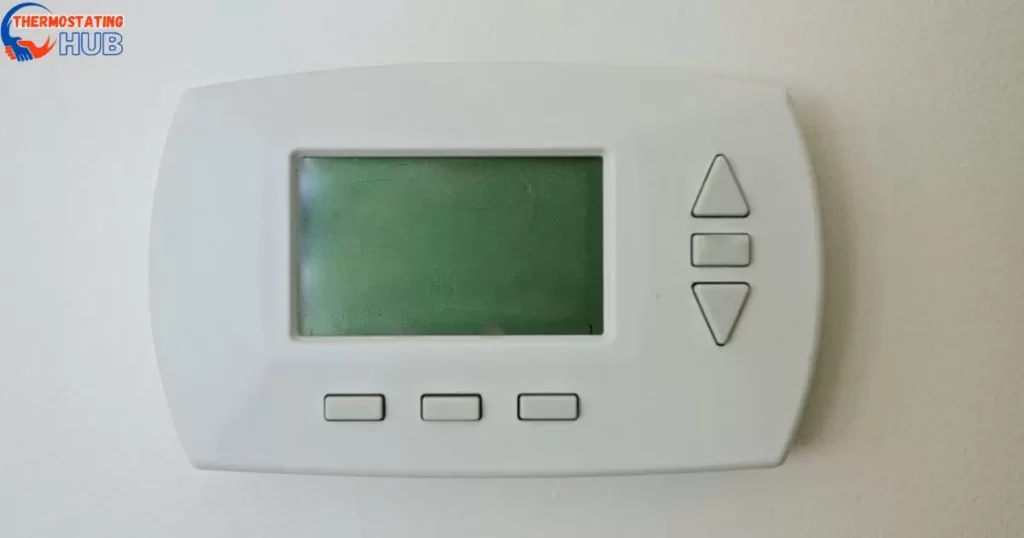
When your thermostat screen goes blank, it’s a clear indicator that the batteries need replacement. A dead screen means your thermostat can’t function properly.
If your Honeywell thermostat has a low battery, you might notice a blank screen. When the battery is low, the thermostat may not have enough power to show any information on the screen. This makes it hard to know the temperature it’s set to or to make any changes to the settings.
Loss of programming
Low battery levels can erase your thermostat’s programmed settings. If you notice your programmed schedule disappearing, it’s time to check and replace the batteries.
When the battery in your Honeywell thermostat is low, it might forget the settings you programmed. This means you might have to set it up again after changing the battery. If you had specific temperatures for different times, the thermostat could go back to its basic settings, which might not be as good for keeping your home just the way you like it.
Causes of Low Battery in Honeywell Thermostats
A few things can make the batteries in your Honeywell thermostat run low, such as:
Age of the battery
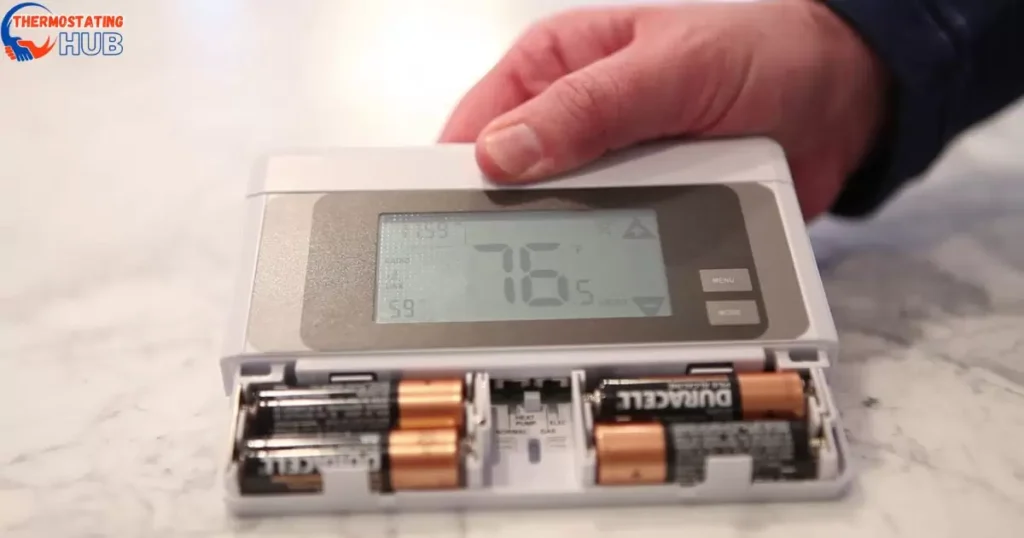
Over time, the batteries in your thermostat lose their power. Regularly replacing them, usually once a year, ensures your thermostat runs smoothly.
The battery in your Honeywell thermostat lasts for about 10-12 months. If you haven’t changed it in at least 10 months, that could be why you’re seeing the low battery symptoms. It’s a good idea to replace the battery to make sure your thermostat works properly.
Temperature extremes
Extreme temperatures, whether too hot or too cold, can accelerate battery depletion. Keep your thermostat in a moderate climate for optimal battery life.
Honeywell thermostats work best at certain temperatures. If it gets too hot or too cold, the battery might not last as long and could run out faster than normal.
Read also: Troubleshooting Liquid Line and Suction Line Same Temperature?
Wiring issues (if your battery keeps draining for less than 6 months)
If your batteries drain rapidly, it might indicate wiring problems. Consulting a professional can help identify and fix these issues.
If your Honeywell thermostat’s battery is running out too quickly, it might be because of problems with the wiring. When the wires are not connected well or if there’s a short circuit, it can mess up the power going to the thermostat. This makes the battery lose its power faster than it should, causing low battery symptoms.
How to Replace the Battery in Your Honeywell Thermostat
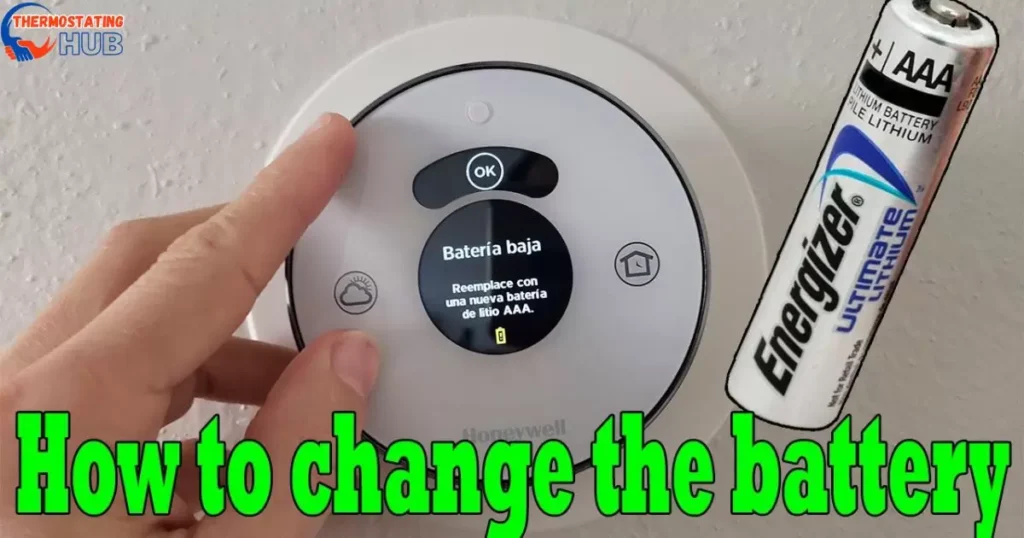
Replacing the batteries in your Honeywell thermostat is a simple process. Usually located on the back or bottom of the device, open the battery compartment, remove the old batteries, and insert fresh ones following the correct polarity. Make sure to dispose of old batteries responsibly.
By recognizing these low battery symptoms and taking proactive steps to replace the batteries, you can keep your Honeywell thermostat running smoothly and maintain a comfortable home environment.
If your Honeywell thermostat is showing signs of low battery life, it’s time to put in a new one. Here’s how you can do it:
- Turn off the thermostat: Before you start, turn off the power to the thermostat. Find the circuit breaker that controls it, and flip it off.
- Remove the cover: Take off the cover of your Honeywell thermostat. Most models have a cover that snaps off easily. Just pull it gently towards you.
- Find the battery compartment: Once the cover is off, you’ll see where the batteries go. On most Honeywell thermostats, it’s at the bottom.
- Replace the battery: Take out the old battery and put in a new one. Make sure to follow the instructions from the manufacturer on how to put it in the right place.
- Put the cover back on: After the new battery is in, snap the thermostat cover back into place.
- Turn the power back on: Finally, turn the power back on by flipping the circuit breaker back on.
Wait a few minutes after changing the battery to see if the low battery warning goes away. If it doesn’t, there might be another problem, and it’s a good idea to get help from a professional to figure it out.
Pros and Cons of Honeywell Thermostat Low Battery Symptoms and Battery Replacement
Understanding the pros and cons of Honeywell thermostats, low battery symptoms, and battery replacement is essential for maintaining a comfortable home. On the positive side, recognizing symptoms early allows for a timely fix, ensuring your thermostat works smoothly, and DIY battery replacement can save you time and money.
However, there are intermittent issues if symptoms are ignored, a recurring cost for battery replacement, and a reliance on batteries, leading to potential programming loss.
Here’s a simple table for a quick overview:
| Pros | Cons |
| Early Detection | Intermittent Issues |
| Energy Efficiency | Battery Cost |
| DIY Battery Replacement | Dependency on Batteries |
This table helps you weigh the advantages and disadvantages, guiding you toward maintaining an effective and hassle-free thermostat.
FAQs
How do I know when my Honeywell thermostat needs a new battery?
Look out for symptoms such as a low battery warning message or symbol on your thermostat, inaccurate temperature readings, unresponsiveness, a blank screen, or loss of programmed settings. Any of these signs indicate it’s time to replace the batteries.
How do I change the low battery in my Honeywell thermostat?
Changing the low battery in your Honeywell thermostat is a simple process. Turn off the power to the thermostat, remove the thermostat cover, locate the battery compartment, replace the old battery with a new one following the manufacturer’s instructions, reattach the thermostat cover, and turn the power back on.
How do I know if my thermostat needs new batteries?
Keep an eye out for common symptoms like a low battery warning, inaccurate temperature readings, unresponsiveness, a blank screen, or loss of programming. If you notice any of these signs, it’s a good indicator that your thermostat needs new batteries.
How do I replace my thermostat battery?
To replace your thermostat battery, turn off the power, remove the cover, find the battery compartment, replace the old battery with a new one, ensuring correct polarity, reattach the cover, and turn the power back on. Following these simple steps keeps your thermostat running smoothly.
Conclusion
So, if your Honeywell thermostat is acting a bit off showing weird temperatures, giving you strange messages, or even going blank it’s probably just asking for some new batteries. Don’t worry; changing them is as easy as pie. Just turn off the power, open the cover, switch out the old batteries with new ones the right way, close the cover, and turn the power back on.
Keep an eye on these signals, and with a quick battery swap, your thermostat will keep your home comfy without any hiccups.
Remember, it’s like giving your thermostat a little energy boost when it starts acting up. By catching these low battery symptoms and replacing the batteries promptly, you’re the hero of the temperature control game, keeping everything running smoothly and your home just the way you like it.
Thank you for taking the time to read this article! If you have any additional questions or need more help, please don’t hesitate to ask. I appreciate your engagement! 📚😊

I’m Nicholas Clark, your HVAC guide at thermostatinghub.com. More than just a writer, I’m your go-to guy for solving heating and cooling mysteries. My blog is a storytelling haven where we unravel HVAC tales together. Let’s turn your comfort queries into stories of warmth and coolness!
